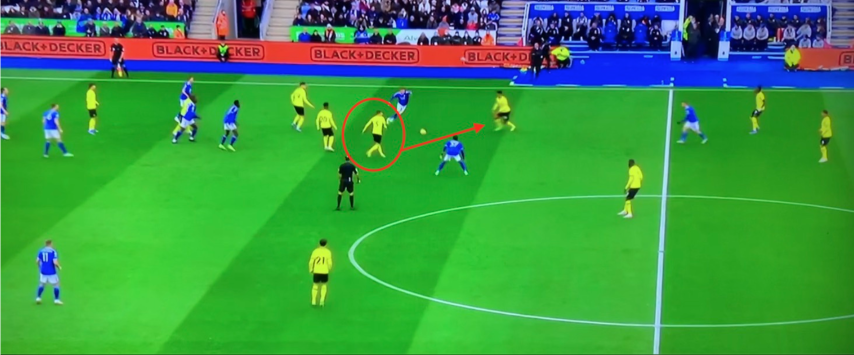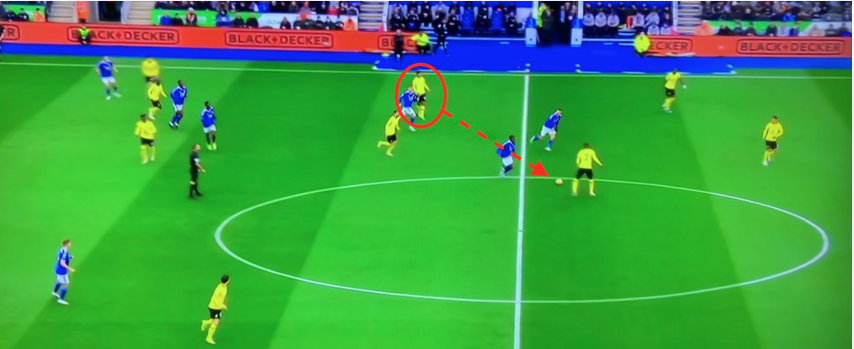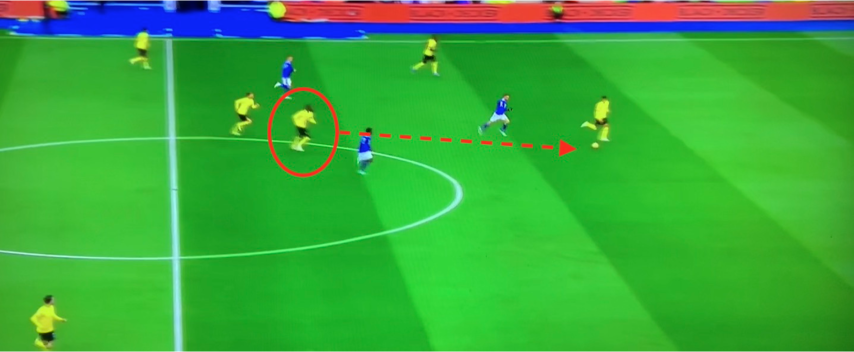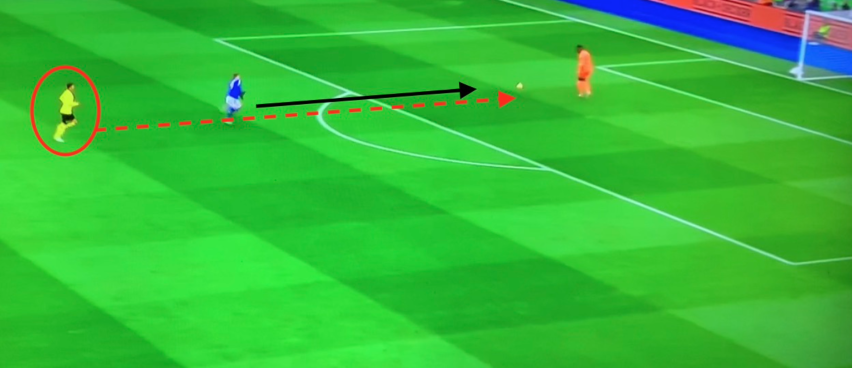By Soren Schamberg
It seems the overwhelming majority of training emphasizes the use of space when moving forward by making runs behind the opposition, checking into the teammate with the ball, creating space and pulling the opposition out of their positions with intelligent runs.
What may not be recognized as often is how defenders are able to use space to stop the oppositions attack and even build out of the back.
Watching Chelsea FC against Leicester City in game day 12 of the Premiere League demonstrates this on a number of occasions.
Chelsea lined up with a 3-4-2-1 and Leicester lined up with a straight 3-4-3
Within the first minute of play, we can see a demonstration of Chelsea’s back four using and holding their positions to take the potency out of Leicester’s attack.
After bobbling around, the ball is given up by Jorghino and falls to an anticipating Reese James. Because James was anticipating the shift in the phase of play from we are losing the ball to we won the ball back, he is able to quickly play the ball back between two Leicester City players to Antonio Rüdiger through a quickly closing window.


Upon receiving the ball, Rüdiger continues to keep possession of the ball and passes it further back to Thiago Silva, giving even more space and making retaining the possession more likely.

Thiago Silva’s backpass to keeper Edouard Mendy is followed by a sprinting Jamie Vardy applying pressure from Leicester City, but Mendy is able to get it away and clear the ball back up the field. This sequence only occurs over a few seconds, but the vertical space created nullifies the potential attack from Leicester and keeps Chelsea in possession of the ball to build another attack.

Thiago Silva’s backpass to keeper Edouard Mendy is followed by a sprinting Jamie Vardy applying pressure from Leicester City, but Mendy is able to get it away and clear the ball back up the field. This sequence only occurs over a few seconds, but the vertical space created nullifies the potential attack from Leicester and keeps Chelsea in possession of the ball to build another attack.
Part Two to follow.
By Soren Schamberg


